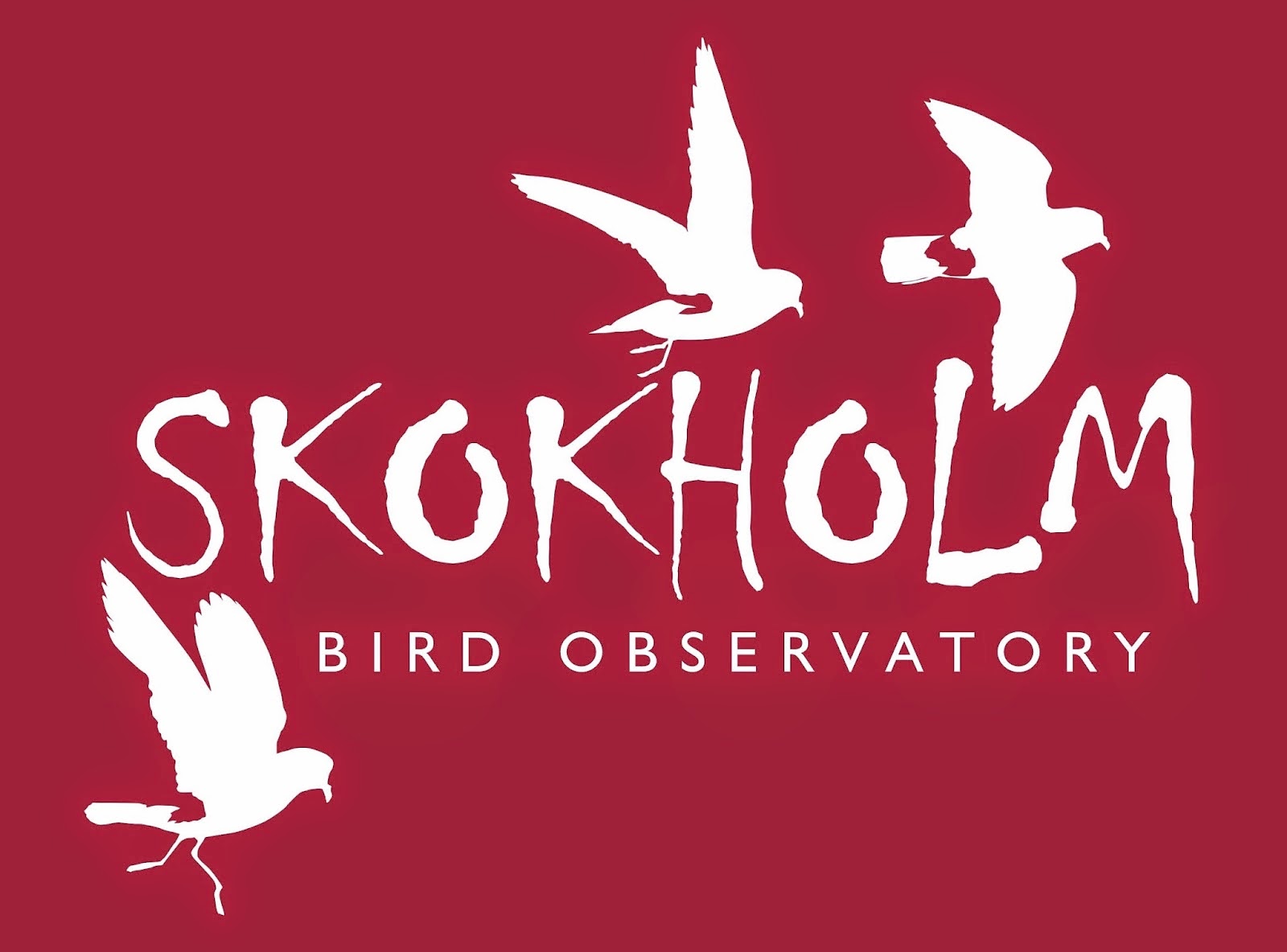It's that time of year again when I spend a couple of weeks as a Volunteer for the Wildlife Trust of South and West Wales on Skokholm Island.
The island came up for sale and was purchased by the Trust between 2007-2009. Once purchased the Island had to be closed as a result of a report carried out by surveyors which concluded there were health and safety risks due to wet and dry rot in all buildings. Repairs were estimated to be in the region of £1m, but, in times when money was tight this huge amount was not available. The Wildlife Trust had meetings with the Friends of Skokholm and Skomer and an ambitious plan was launched to carry out the work using the skill and will of volunteers with a budget of £100,000. In the last 4 years there has been an immense amount of renovation work carried out to get the island buildings suitable for habitation again. The first visitors were in 2011 and each year since there has been further improvements like electricity and running hot and cold water
In 1933 the time of Ronald Lockley the Island was accredited Bird Observatory Status. This Status was lost in 1976 when the Island owners at that time stopped all bird ringing and trapping of birds. As part of all the ongoing work in the last 4 years we have been paving the way to apply for Observatory Status again. Three new Heligolands were built and last year we had two new very experienced wardens. Their primary purpose was to conduct long term monitoring of bird populations and migration and encourage volunteers, particularly ringers, to aid in this study.
The 44th Bird Observatory Council Annual General Meeting took place on the weekend of 11th January this year at Portland Bird Observatory where accreditation was awarded again. Really good news.
The two weeks of my visit this year along with other volunteers was to prepare the Island to celebrate for the launch of the Bird Observatory Status, plenty of painting and general maintenance and also get it ready for the first paying guests of the year. In between all this some bird watching and ringing. I look forward to the 27th.
I digress a little but thought it may be of interest.
My boat trip to get me to Skokholm was delayed by 4 days due to high winds and a large swell and I eventually got there on the 26th March.
The migration was slow because of the wet and cold weather but the odd Chiffchaffs were turning up in the Heligolands. Sorry about the paint stained hands!
There had been a couple of Reed Buntings about the farm and this male was caught in the well Heligoland and processed as a re-trap having being caught a few days before.
This early morning I sat in the Well Hide and 5 Linnets turned up and in total for the day 12 birds were seen.
Oystercatcher and a Meadow Pipit. If gives you an idea how big Oystercatchers are.
The first Puffins arrived this week, but only stayed at sea. They are always a favourite of the many visitors that come to the islands. Every day now a Puffing count is done as part of the sea bird monitoring process.
Finally for week one, which was the highlight of the week for me, was this Chiffchaff. It had been ringed before, the ring looked new as if it had only been ringed in the last few days and when checked I was pleased to discover it was a Control bird. The ring number was Z43481 ringed and belonging to the Aranzadi, San Sebastian scheme which is part of the Basque area of Spain. The warden looked the area up on the Internet and emailed them with the details of the bird. However, no reply was received by the time I left the Island a week later. This was my first non UK Control.
Week 2 to follow.








Well done Charlie - more nice piccies.
ReplyDeleteThanks Mike. It was nice to meet you on Skokholm. Worked out the anagram.
ReplyDeleteThose pictures are really great!
ReplyDeleteI've discovered many seabirds I didn't know while reading about Skomer Island...
I think I should plan a long trip to Wales, and take time to discover all the islands!